Deathloop will need to be a masterpiece to top Dishonored 2
2016 found developer Arkane at the height of its abilities, and without a sufficient audience to appreciate them
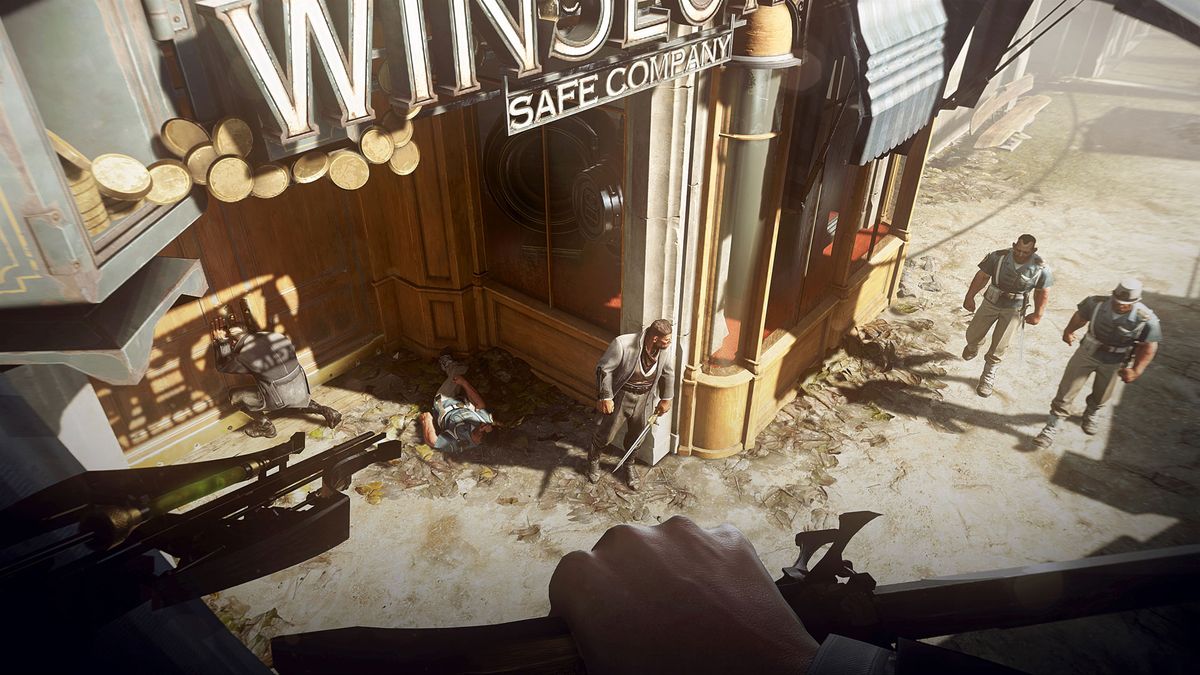
There's an upgrade in Dishonored 2 that allows you to change the course of a deadly plummet, turning certain death on the already-bloody cobbles of Karnaca into an opportunity to pick a new path. Mid-fall, time slows, and you tap into the forbidden power of the Void to reach out to a distant ledge or balcony, pulling yourself across the expanse. Perhaps, in the process, you'll find a new vantage point from which to plot your way through the city. Or tumble into a condemned apartment, discovering a bonecharm that opens up a new way to play – a future that just seconds ago had looked impossible.
It's a quintessential moment in a game world which, itself, is mid-fall. Karnaca, like Dunwall before it, is a place in societal collapse – a once lofty culture which, under a new ruler, has recently taken a nosedive, shedding its principles, security and freedoms as it reaches terminal velocity. Playing as an outsider uniquely placed to change things, it's your job to find a safe landing for the city – or to add your weight and let it crash against the rocks.
Karnal desire
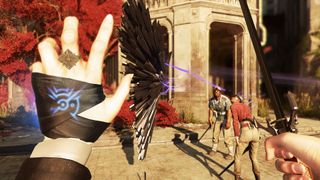
Let's step back from the brink for a second. Dishonored is the trademark series of Arkane, the developer behind the upcoming Deathloop, which is set to be September's biggest action release and a key PS5 exclusive for 2021. Dishonored is a stealth game and melee fighter built to support player choice at every level – on the streets, with its characters, and in the conclusion of its story. It deals in great economic injustice: the gap between rich and poor, magnified and laid bare by plague, police brutality, and the exploitation of workers by an unchecked noble class.
In 2016, the Dishonored series suffered a great economic injustice of its own: despite the backing of Bethesda, Dishonored 2 didn't sell nearly as well as the 2012 original. It's a trend that continued a year later with Death of the Outsider, prompting Bethesda to mothball the series. It's "resting" for now, according to Arkane.
Don't feel too bad for sleeping on Dishonored 2, to continue the napping metaphor. You weren't alone – it took me five years to get around to finishing it. But now is a fine time to breathe in the warm air of Serkonos, the continental European-style island to which Karnaca clings like a barnacle – and where so much of Deathloop can be traced back to.
For many, the closest reference point will be BioShock or Fallout 4. These games are all rooted in the same design tradition – the immersive sim – and share a thick, porridge-y atmosphere. Their worlds are dense with objects you can pick up, pocket or chuck around, grounding you in spaces that have clearly been home to somebody, even as they're rearranged for fights.
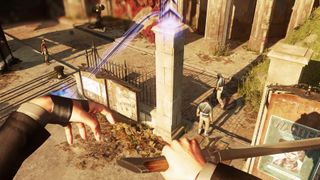
BioShock and Fallout, though, are dystopias. Dishonored 2 is more of a demi-stopia. Karnaca is only halfway to hell. Citizens still head out to the docks each morning to haul in fish and chop off their heads in the baking sun. Stop them for conversation and they may even make an argument for remaining indefinitely. ("Lots of people want to leave, but where would they go? There's money here, even if it's dirty.") They still staff the shops, selling guns to the street kids and strongboxes to panicked nobles looking to secure their valuables. In this imbalanced world, says the guy behind the till at the Winslow Safe Company, a person either needs no safe at all, or plenty of them – "That's just the way it is."
Sign up to the 12DOVE Newsletter
Weekly digests, tales from the communities you love, and more
That state of volatile ambiguity makes Dishonored 2's levels a treat to explore. Never entirely safe but rarely openly hostile, they push you to evaluate the scenes in front of you – perching on the periphery to work out whether an NPC is likely to attack you, or whether, unprompted, you might choose to attack them. Even the most significant scraps in the game are entirely optional – though you're sent after assassination targets, there's always a creatively non-lethal way to dispose of them – and so choosing your foes becomes just as important as beating them. By Dishonored 2's latter half, the principal cast begin to remind you that, by picking off Karnaca's most powerful, you're creating a power vacuum, and are also responsible for leaving behind the right people to fill it.
That's another break from the themes of dystopia. In a given BioShock game, you're seeing the aftermath of an ideology taken to its most extreme and uncompromising end point. In Dishonored 2 – or its spiritual predecessor, Deus Ex, the series that director Harvey Smith cut his teeth on – the politics that inform Karnaca's future has yet to be determined.
By killing off the gangs, you'll effectively hand the keys to the city to the Abbey of the Everyman, a church that promises order and work for idle hands at the expense of any art that dabbles in chaos (this is not a world that will ever develop rock 'n' roll). Bump them off, and you'll be handing the place to Paulo – Pedro Pascal, to you – a killer and extortionist who, on the quiet, espouses worker-friendly plans to improve the lot of the city's long-suffering miners, and doesn't see any philosophical conflict in his interests.
City watch
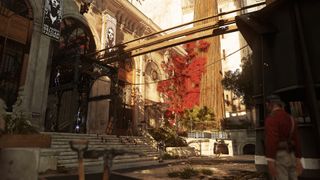
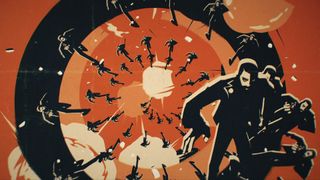
From Deathloop to Returnal, how 2021 became the year of the video game time loop.
Juicier still are the many possible variations Dishonored 2 leaves room for. What if you leave both powers in play, so that neither can claim decisive victory over the other and fully instate their will? That could be a kind of balance. Or kill them all, trusting Serkonan culture to grow back where it was burned away, fed by strong, centuries-old roots. This is no BioWare RPG: when options aren't made explicit, you're never quite sure of your limits, or how the world might respond. It's thrilling to be placed on unsure footing in this way: Dishonored 2 is a game that you can explore every interior of, yet still leave with lingering mysteries.
Many of these traits also belonged to Dishonored back in 2012. What elevates this sequel to all-timer status are the two pearls nestled in its centre – a pair of high concept levels quite unlike anything else. One is A Crack in the Slab, a tale told between two time periods that lets you flit back and forth between civilisation and ruin at will, witnessing Karnaca's lavishly hopeful past and disastrous future across the same set of boudoirs and dining rooms. The other is the Clockwork Mansion, a gigantic Rubik's cube that continually reconfigures itself around you. Its sweeping mechanical movements are impressive, but what sticks with you is the way it all fits together – Arkane letting you behind the walls to inspect the workings. It's an architectural wonder indicative of the studio's way: magic with no shortcuts and few illusions.
You can expect to see the same approach writ large across Deathloop. Rather than a Clockwork Mansion, Arkane is giving us the run of an entire clockwork island, stuck in a repeating day – one we can wind up in different ways to influence the schedules of the occupants and, eventually, line up everything just right for that most Dishonored of things – a surgical series of assassinations.
In the meantime, there's so much more Dishonored 2 to rave about: the potential for the fates of side characters to haunt your head long after the game has left the screen; the awesome horror of the dust storms that sweep down the mountain from the mines, visualising the erosion of the city's working class; the way the curve of Karnaca's coast makes each district the backdrop of another, connecting these discrete levels in a fashion most open worlds could only dream of. But it's best you discover the rest for yourself. Step off the ledge and find out what it's like to make decisions mid-fall.
Looking for more info on Arkane's latest? A recent Deathloop deep dive reveals how multiplayer works.
Jeremy is a freelance editor and writer with a decade’s experience across publications like GamesRadar, Rock Paper Shotgun, PC Gamer and Edge. He specialises in features and interviews, and gets a special kick out of meeting the word count exactly. He missed the golden age of magazines, so is making up for lost time while maintaining a healthy modern guilt over the paper waste. Jeremy was once told off by the director of Dishonored 2 for not having played Dishonored 2, an error he has since corrected.
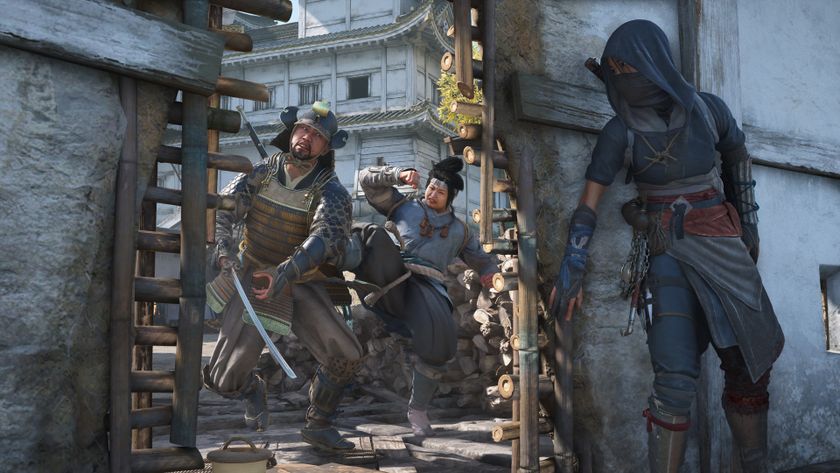
Assassin's Creed Shadows devs "actively looking at" an even harder difficulty mode for the RPG: "How challenging do you want it?"
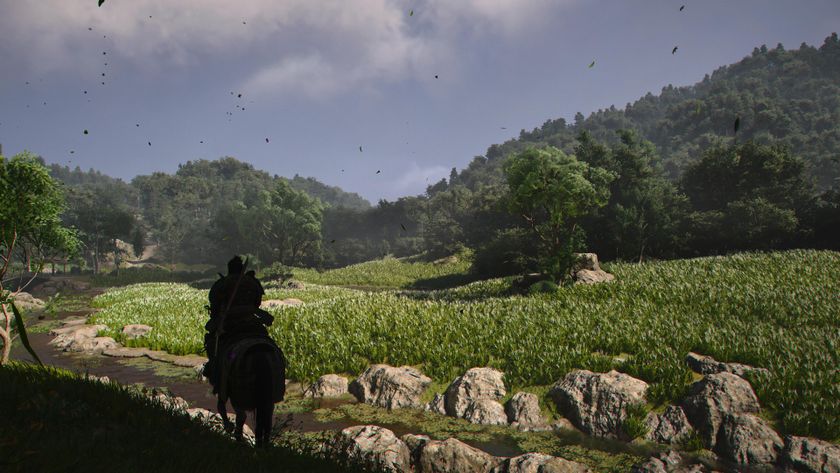
Assassin's Creed Shadows' delays were mostly used to polish the RPG, creative director confirms, not for deeper changes brought about by Star Wars Outlaws reaction











